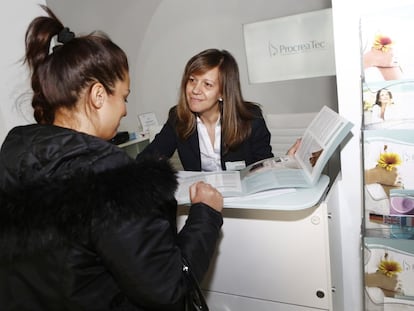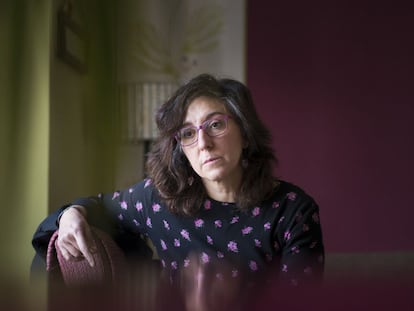In Spain, 230,000 frozen embryos await an unclear fate
Left over from fertility treatments, they could be donated or used by science, but there are few takers
Spain¡¯s fertility clinics have a problem: they don¡¯t know what to do with all the frozen embryos left over from IVF treatments. State records show that more than 230,000 of them have been in storage for over two years, says Jos¨¦ Antonio Castilla, one of the workers in charge of record-keeping. And every year, there are around 50,000 additional embryos left over from fertility treatments.

Changes made in 2003 to the Assisted Reproduction Law left couples with three options: giving the embryos to other infertile couples, donating them to science, or having them destroyed.
The Popular Party (PP) conservatives, who were then in government, favored the first choice because it avoided criticism by the Catholic Church and other conservative groups who feel that human life begins the moment a sperm fertilizes an egg.
In 16 years, there hasn¡¯t been a single scientific project requesting embryos
Roc¨ªo N¨²?ez, Cl¨ªnica Tambre
The second possibility was using the embryos for scientific research. At the time, embryonic stem cells were a promising field, and even though it meant destroying the embryo, conservative officials felt that at least it was for a good cause: to cure other people.
The third option was simply to get rid of the embryos by taking them out of the freezer. But this was viewed as an abortion by the most conservative sectors in Spain.
Over a decade later, donation has not yielded the expected results ¨C and it¡¯s not because of a lack of demand, notes Castilla. But the law stipulates that donors cannot be over 35 ¨C this rule was written with egg donors in mind ¨C when most couples who try fertility treatments have passed that age.
And scientific research with embryos has been a failure as well.
Destruction is viewed as abortion by the most conservative sectors in Spain
¡°In 16 years, there hasn¡¯t been a single project requesting them,¡± says Roc¨ªo N¨²?ez, deputy director of the Madrid-based fertility center Cl¨ªnica Tambre. The emergence of new sources of stem cells, including the possibility of reprogramming adult ones, has dimmed interest in embryonic stem cell research.
¡°And very few of them have been destroyed,¡± says N¨²?ez about a process that requires that the embryo remain in storage for 10 years before elimination. After that, the couple must still provide consent. But after so much time, some people can no longer be easily located, while others simply refuse to have their embryos destroyed.
¡°In theory, if we send them two certified faxes and receive no reply, we may go ahead with embryo destruction,¡± says N¨²?ez, whose clinic is storing around 50,000 frozen embryos without a clear purpose. ¡°But you always think, what if a research project turns up?¡±
English version by Susana Urra.
Tu suscripci¨®n se est¨¢ usando en otro dispositivo
?Quieres a?adir otro usuario a tu suscripci¨®n?
Si contin¨²as leyendo en este dispositivo, no se podr¨¢ leer en el otro.
FlechaTu suscripci¨®n se est¨¢ usando en otro dispositivo y solo puedes acceder a EL PA?S desde un dispositivo a la vez.
Si quieres compartir tu cuenta, cambia tu suscripci¨®n a la modalidad Premium, as¨ª podr¨¢s a?adir otro usuario. Cada uno acceder¨¢ con su propia cuenta de email, lo que os permitir¨¢ personalizar vuestra experiencia en EL PA?S.
En el caso de no saber qui¨¦n est¨¢ usando tu cuenta, te recomendamos cambiar tu contrase?a aqu¨ª.
Si decides continuar compartiendo tu cuenta, este mensaje se mostrar¨¢ en tu dispositivo y en el de la otra persona que est¨¢ usando tu cuenta de forma indefinida, afectando a tu experiencia de lectura. Puedes consultar aqu¨ª los t¨¦rminos y condiciones de la suscripci¨®n digital.










































